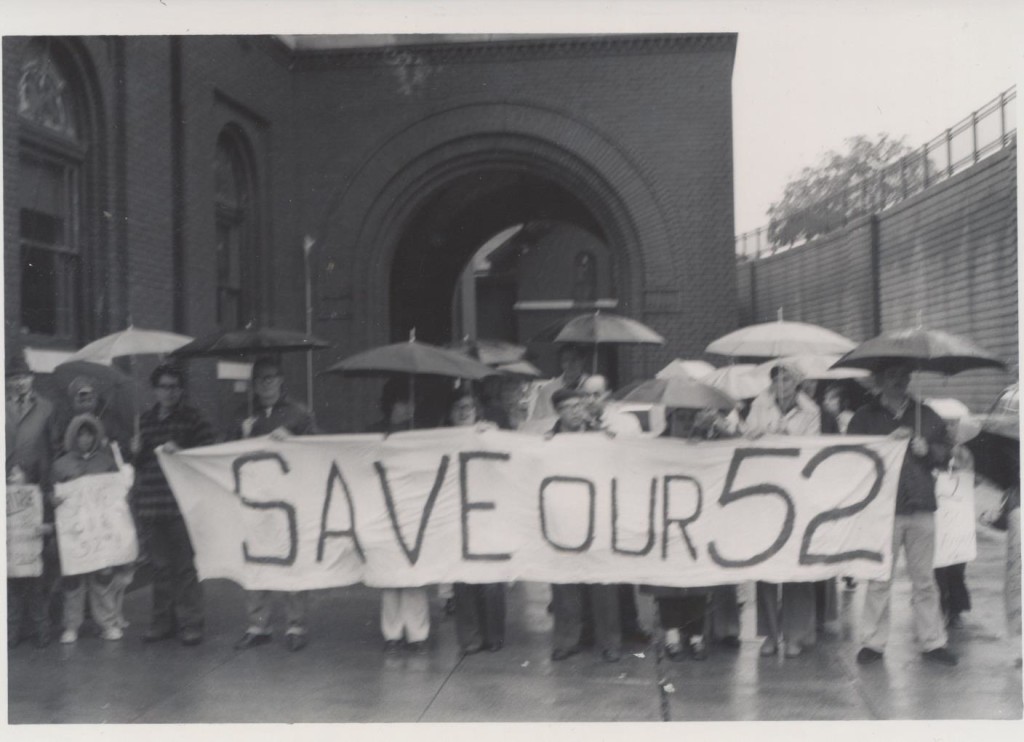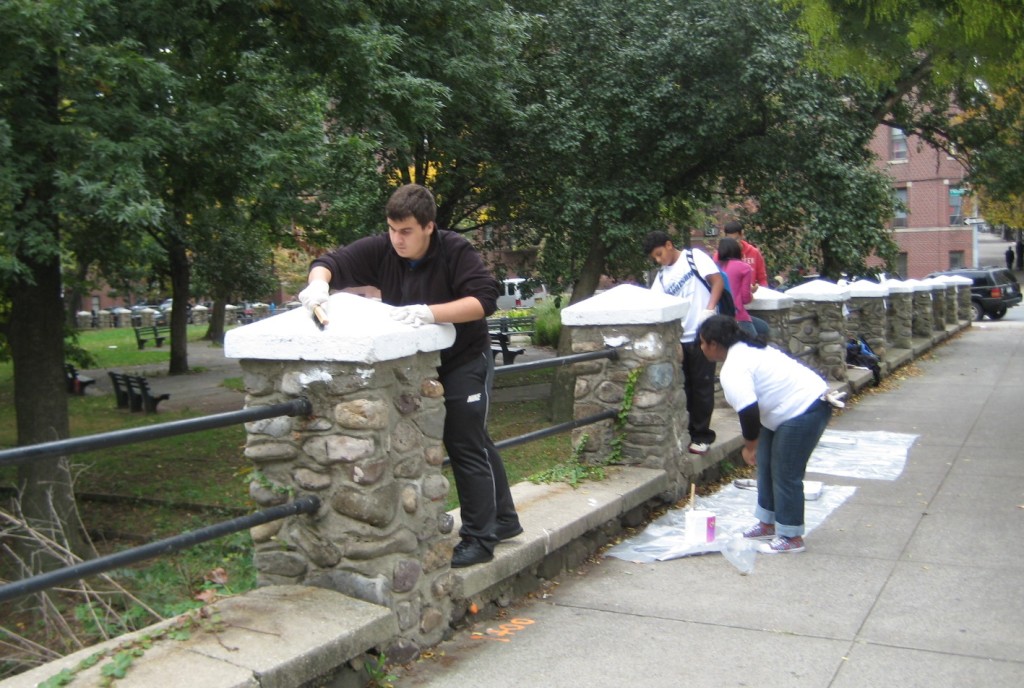
Photo courtesy John Reilly
By DAVID CRUZ
In the 40 years the Bedford Mosholu Community Association has remained synonymous with the Bronx’s Bedford Park community, change has remained a constant in the leafy neighborhood.
The 1970s’ white flight phenomenon came and went. The city edged toward the brink of financial ruin, and seeds of development in the neighborhood took shape. But in the face of change, and in some cases turmoil, BMCA’s mission has been the same as it celebrates its 40-year milestone: preserving the quality of life for the little-known working class community.
It’s the first Monday of April, and residents cram a tiny apartment at a building tipping Mosholu Parkway South and Webster Avenue. It’s one of those can’t-miss meetings that offer a briefing over the state of the neighborhood. Barbara Stronczer, BMCA’s fifth and long serving president, sits alongside an executive board that includes Robert Hamill, Margaret Collins, Mary Vallati, Norma Jean Scully and Grace Siemer. Stronczer updates members on development projects, concerns over varnished fireboxes and plans for a spring cleanup of the parkway.
And sustaining an organization is never an easy feat, especially if it solely depends on volunteers to carry out its mission for a higher standard of living. Volunteers can be non-committal. Solutions often lumber, taking years to see through. But BMCA has kept its eye on the ball, taking the city and state to task whenever issues arise. After all, BMCA members have long been tired of the Bronx playing second fiddle to the rest of the city.
“If you don’t invite different people to a meeting to express your concerns or send letters from an organization, things don’t get touched,” said Stronczer, in an interview with the Norwood News. “And certainly the Bronx has a reputation for being the stepchild in the city, anyway.”
The group became the de facto community organization, shortly after the Bedford Park Civic Association, one of the more familiar groups of yesteryear, began to phase out.
Bedford Park remains a relatively unknown neighborhood in the Bronx. Dotted with two-family homes, co-ops, easy public transportation access and some retail corridors, Bedford Park is geographically fortified by some of the borough’s well-known institutions—Montefiore Medical Center, The New York Botanical Garden, Fordham University and The Bronx Zoo—diverting from the spotlight. It’s also occupied by Mosholu Parkway, a tree-lined roadway that serves as a neighborhood boundary and amenity. Barbecuing and organized games are prohibited yet still abound.
But there were moments when Bedford Park’s seams began to tear. Crime reared its ugly head, as thugs routinely shook down the elderly. The year was 1975, when the onset of urban decline took shape, and city services began to wane. More than 300 tenants met at Bedford Park Congregational Church, forming a neighborhood watch program, with help from several block and tenant associations BMCA initially formed.
“Each block had a few people come to a meeting. And in order for a block to join the security patrol they had to pay

Photo courtesy
Bedford Mosholu Community Association
$300 ‘cause this was going towards the equipment,” said Stronczer.
Protesting was the last resort for BMCA, but warranted should authority figures ignore the association, said Stronczer. It happened during BMCA’s earlier months, when a proposed playground on Mosholu Parkway stoked BMCA’s ire.
Strength in numbers reflected in BMCA’s victory in staving the city’s plan to close the local 52nd Precinct on Webster Avenue in late 1975. This followed several days of large-scale demonstrations inside the precinct and throughout the community, with droves of tenants pounding the pavement. BMCA’s mobilization efforts were grand, coming long before the days of the Internet, when word of mouth and flier distributions fueled troupes of demonstrators.
The rally would last four days. Protestors were seen carrying large signs as another group paraded down Webster Avenue towards Fordham Road, lifting a coffin donated by the local funeral group, a macabre symbol of the precinct’s fate. Bystanders, many in shock, mistook the procession for a real one, Stronczer recalled.
“People on the sidelines said, ‘He must’ve been a very important person.
Look at all these people marching,’” said Stronczer of the presentation, adding there were sit-ins and sleepovers at the 52nd Precinct, a show of force against the city’s plans. City legislators, under intense pressure, soon relented. “It was a real community event,” said Stronczer.
“[BMCA] became very quickly a voice for very specific items they needed out of the city,” said John Reilly, currently the executive director of the Fordham-Bedford Housing Corporation and one of the credited founders of BMCA.
Their efforts are broad, and never beneath them. So if it was painting fireboxes, seeing the re-opening of C-Town supermarket in a deprived section of the neighborhood or convincing the city to plant trees on Mosholu Parkway, the group was there. Even sophisticated matters proved to be projects BMCA could take on, particularly investment matters where neighborhood banks invested capital monies into derelict buildings.
The group’s mission remains the same. On the first Monday of each month (excluding July and August), Stronczer leads a forum that’s akin to what one would see in a small town—neighbors turning a cramped apartment into a house of ideas.
For now, rehabilitating Mosholu Parkway remains at the top of BMCA’s agenda, engaged in a broad campaign to revamp the parkway. Those efforts coincide with BMCA’s worries of overdevelopment, a recent phenomenon born out of a 2009 rezoning for nearby Webster Avenue. It’s a sign of Bedford Park’s view as a family-friendly community, but also a concern for BMCA.
The neighborhood has since benefitted from the kind of stalwart presence BMCA has become, forging a sense of community seen in tight-knit neighborhoods.
“It did create very much more of a feeling of community,” said Reilly. “Neighbors were talking to each other. So that was a side benefit that was beyond the issue. That probably helped as much as anything.”




